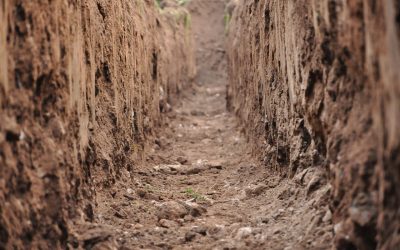Achieving the highest possible yield from your energy plantation is an absolute priority for all project owners. Maximising the biomass output has a direct link to the biogas capacity – thus, the cultivation methodology must be perfect. However, the harvest time and frequency also influences your overall biogas yield, therefore owners of energy plantations must be prepared to adjust.
Arundo: Optimal harvest time and frequency
The timing and frequency of the harvesting of Arundo has been seen as a significant influence on both the quality and quantity of the biomass yield. At the same time, it is generally argued to have a significant impact on the digestibility and methane yield of the energy crop. The influence on Arundo’s biodegradability and methane output is usually derived from changes in harvesting methodology, causing change in the proportion of the stems respect to the leaves, as well as chemical traits like nitrogen concentration, C/N ratio, NSC (Non-Structural Carbohydrates), and cell wall components.

Single or Multiple Harvests per Year?
Even though it has been previously established that Arundo Donax has the capacity to regrow even in the case of an early harvest, environmental conditions and the length of the growing season will vary the rate of perennial plants’ regrowth. It is therefore concluded that whilst sourcing biogas production with multiple harvests per year is feasible, several factors must be taken into consideration. When deciding the harvesting strategy, one has to go beyond the question whether a single harvest or multiple harvests are more advantageous in terms of biaogas production from Arundo – instead, the focus shifts away from biodegradability, and factors such as crop duration, machinery requirements, nutrient uptake, environmental and economic sustainability take the lead.
Our Partner, Equilibre demonstrating the harvesting and utilisation of ‘green’ Arundo
BMP: An Answer to the Best Harvest Time and Frequency?
Biochemical Methane Potential (BMP) has been used on a regular basis in order to assess methane yield capacity of organic matter – including Arundo biomass – as they are placed within anaerobic conditions. Arundo and other lignocellulosic substrates have been studied thoroughly as potential resources for anaerobic digestion by multiple scientists and academics, and reports showed that Arundo achieved outstanding methane output. On the other hand, considering the BMP alone is not necessarily enough. Kinetics of anaerobic digestion is also crucial, considering that rapid methane production is crucial to shorten the residence time and to achieve improved methane yield in real-scale, continuous plants.
Figure 1 – Biomass yield (a) and methane yield per hectare (b)of first cuts (A1-A5) and second cuts (RA1-RA2) of Arundo.
Double Harvesting for High Biomethane Yield
Ragaglini’s study in 2013 showed that Arundo has a high potential for biomethane production, especially when managed under double harvesting systems.
Double harvest increased the methane yield per hectare by 20–35% in respect to the most productive single harvest time, as consequence of the highest BMP achievable by juvenile stages, and the digestion kinetics was also favoured.

Figure 2 – Date of harvest, total, and volatile slides content (TS and VS) on the fresh matter (FM), and ash concentration on the dry matter (DM) for first harvests (A1-A5) and second harvest (RA1, RA2) of giant reed and for maize silage (M).
In terms of harvest timing, it is clear that the dates between August and September (A3 and A5) was the ideal timing for a single harvest, however, for a higher yielding double harvest, the most ideal dates would be first in June and then again in October (A1 + RA1) or in July and October (A2 + RA2).
This conclusion was achieved despite the fact that the lignin content (around 25%) of Arundo was higher in the more mature phases – yet, the methane potential was significantly higher than perennial plants harvested at full maturity; almost more similar to grasses harvested at earlier stages. Overall, the double harvesting system could allow a considerable land use saving for biomethane production in respect to maize.







